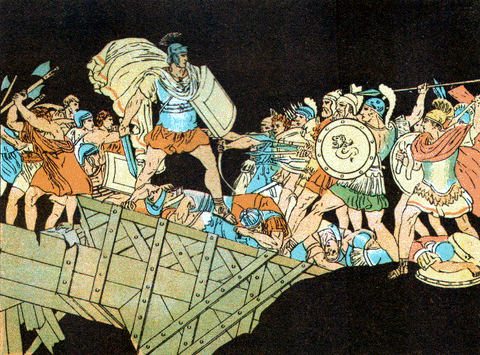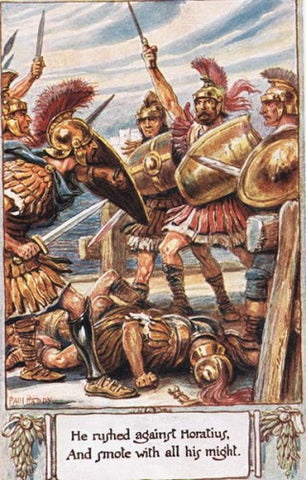
Why the Ballad of the Republic?
Casey at the Bat: A Ballad of the Republic, Sung in the Year 1888
#CaseyattheBat #BalladoftheRepublic
"Casey's" subtitle, "A Ballad of the Republic," remains the most enigmatic aspect of "Casey at the Bat." This is one of the remaining puzzles which "Casey" still presents to contemporary readers, and which Caseyatthe.blog has promised to explore. The modern approach to the poem is epitomized by the entry "Ernest Lawrence Thayer" in The Oxford Book of American Poetry, edited by David Lehman and John Brehm (New York: Oxford University Press, 1996):
A mock-epic, the poem is a critique of hero worship, a point that is intimated by the poem’s original subtitle, “A Ballad of the Republic."
Poet Donald Hall (1928-2018), 14th Poet Laureate of the United States, at his home in Wilmot, New Hampshire
In this same vein, Poet Laureate Donald Hall explored the meaning of the original subtitle in his 1998 essay celebrating "Casey's" centenary. During times of war and crisis, "we require heroes," observed Hall, "but hero-worship is dangerous and needs correction...DeTocqueville stands behind this poem as much as Homer does. Democracies choose figures to vote in and out of office. We do not want gods or kings--that's why we crossed the ocean west--but human beings, fallible like us."[1]
Donald Hall, with the insight of a poet exploring the mind of a fellow poet, came close to the truth of the "Ballad of the Republic." Though he was on the right track, Hall might have benefited from the critical insight of Yale Professor Harold Bloom. Deep within Bloom's Anxiety of Influence lies the profound assertion: the meaning of a poem can only be a poem--but another poem--a poem not itself.[2] In this sense, the meaning of "Casey" can only be fully understood as a misprision-- or, in Bloom's terms, a "creative misreading" of another famous 19th-century ballad entitled "Horatius."
Macaulay, writing in the early 1840's, had taken his own inspiration from the account of a battle at the Sublician Bridge across the Tiber in 510 BC. The battle was memorialized by the historian Livy, writing in the Augustan age about the ancient legends of the Roman Republic. It was Macaulay's conceit to recreate the ballads which the scholars of his day believed had been the source of stories drawn upon by Livy and other later historians of Rome's earliest days. "I amused myself," wrote Macaulay, "...with trying to restore some of those long-perished poems." Macaulay went so far as to place his collection of ballads in historic context, each with an introduction explaining how minstrels might have interpreted the heroic episodes of a distant past.

British parliamentarian, essayist, and historian Thomas Macaulay's Lays of Ancient Rome (1842) was a best-seller both in Britain and in America. "I amused myself," wrote Macaulay of his epic ballads, "...with trying to restore some of those long-perished poems" which he imagined were kept alive through oral tradition of balladeers.
Though Hall omitted Thayer's specific reference to ancient Rome--and to "Horatius," --Hall's essay clearly evoked the post-Civil War Republic of 1888: a landscape, with all its contradictions, still shadowed by the horror and heroism of America's "Homeric Age."

John Evangelist Walsh (1927-2015)--journalist, biographer, editor, historian and author of The Night Casey Was Born (2007)
John Evangelist Walsh, in The Night Casey Was Born (New York: Overlook Press, 2007) made the same observation regarding this "curiously whimsical subtitle"; "Why 'of the Republic'? Why not 'of baseball'? Why 'Sung'?..."Why specify the year? What did 1888 have to do with anything?"[3] Walsh suggested that the readiest answer was probably the best: that baseball, by 1888, had not only insinuated itself into the culture of America but in doing so, had become a reflection of the character of the Republic itself. And as for 1888, Walsh suggested,
If any year in baseball is to be picked as the crucial one, the historical pivot, then it's 1888. In that year, baseball still hovered on a line between the old and the new, between birth and maturity. It had become pretty much what it is today, yet hadn't entirely lost the fresh, boyish air of its rowdy beginnings, its note of abandon.
I will always be grateful to John Walsh for his insights into the theatrical origins of "Casey's" popularity--and particularly for Walsh's intuition that Thayer's romantic contretemps in San Francisco had somehow provided an authorial impulse. But this is the crossroads where, I would argue, much of the interpretation of "Casey" has gone astray-- precisely because Thayer's subtitle was the single strongest hint of the epic framework upon which he had constructed the ballad of "Casey at the Bat."

Benjamin Harrison, Republican Presidential Candidate, and Vice-Presidential Candidate Levi Morton prevailed in 1888 over President Grover Cleveland and his Vice-Presidential candidate, former Ohio Senator Allen G. Thurman. The major issue in the 1888 contest: tariffs.
Certainly in an election year--like 1888--the future of the Republic would be a perennial topic of debate. Thayer and others of Hearst's "Harvard brigade" joined their boss and other Examiner staff in February in Washington, D.C., where Hearst made a bold but unsuccessful bid to hold that year's Democratic presidential convention in San Francisco. Following a short visit with Will's parents Phoebe and George, Thayer and his pal Fatty Briggs made their way back to Massachusetts. They arrived just ahead of the deadly Blizzard of '88. After Worcester dug itself out of the massive snowdrifts, Thayer would have received by mail the Sunday, March 25 edition of the Examiner in which a full four columns were devoted to Ambrose Bierce's "The Fall of the Republic."

Ambrose Bierce (1842 - ca 1914), American journalist, satirist and author. Bierce was one of the few American writers with first-hand experience as a soldier on the battlefields of the Civil War. Will Hearst recruited him to write a weekly column for the Examiner, where his columns often appeared next to Thayer's ballads
Bierce's unredeemed vision of the follies and corruption of democracy and the perils of anarchy was deeply at odds with the spirit of Edward Bellamy's Looking Backward: 2000-1887,[4] the newly published fantasy of a Utopian industrial socialism as viewed from the dawn of the 21st century. In fact, Bierce's "Fall of the Republic" may have been the first response to Edward Bellamy's Looking Backward: 2000-1887, an engaging time-traveling narrative envisioning a Utopian future overcoming the stark inequalities of the 1880's.

Both Bierce and Bellamy had positioned themselves in an imagined future "looking back" at the history of the Republic to interpret the sequence of events that had evolved since the "distant present." Originally, Bellamy's narrator was to have awakened in the year 3000 -- coincidentally, in the same millennium from which Bierce "looked back" to the fall of the American Republic
We do not know how well Bierce and the twenty-four-year-old Thayer may have known each other during their time in the Sacramento Street offices of the Examiner. But in the same way that Bierce painted an affectionate portrait of the young William Randolph Hearst, who was the same age as Thayer and his classmates, Bierce may have reached out to Eugene Lent, Cozy Noble, Fatty Briggs, and Phinney Thayer--and it's likely Hearst would have introduced Bierce to his Harvard Lampoon pals. In spite of the lack of awe they affected toward the survivors of the Civil War, if these favored young men from the Ivy League were curious about Bierce's experiences during the War, and if they had persuaded him to recount any of his stories, Bierce would have given them their fill of the grim ironies of battle. As a lieutenant on General Hazen's staff with Sherman's army, Bierce been badly wounded in the head by a sniper's bullet near Atlanta in June 1864--a near-fatal wound which continued to plague him with blinding headaches for the rest of his life.

Thayer's "look backward" was from the perspective of the Roman Republic. Thayer studied the classics, as well as Latin and Greek, at Worcester's Classical and English High School. His graduation oration was titled "Roman Polytheism."
Reading Bierce's column in the early spring of 1888, and with Bellamy's best-seller likely also on his mind, Thayer was well positioned to take his own "look back" at the state of the American Republic. But as a classicist and scholar, Thayer's retrospection would have been through the window of ancient history and wisdom. "Looking back" for clues to the fate of the Republic was the spirit of the moment. But it would be the bronze-burnished Roman Republic of his school days toward which Thayer would naturally turn--after all, his graduation speech at the Classical and English High School had been "Roman Polytheism." Here was a moment for Thayer's unique contribution to the ferment around the future--or fate--of the American Republic. And as a humorist, who shared neither the convictions of Bellamy's utopian socialism or Bierce's horror of an inevitable democratic anarchism, the template for Thayer's own "Ballad of the Republic" was as handy as the shelf in his bedroom study in Worcester, on which reposed his well-worn schoolboy copy of Macaulay's Lays of Ancient Rome.

Guillaume Lethiere (1760-1832), "Homer Singing His Iliad at the Gates of Athens"
To the 19th-century reader Thayer's subtitle was in fact the clearest signal that "Casey" was in fact built upon Macaulay's framework for "Horatius," itself subtitled "A LAY MADE ABOUT THE YEAR OF THE CITY CCCLX." A lay, of course, is "a ballad meant to be sung or recited." The most ancient of epic of the Western world, the Iliad, begins as a song: "Sing, O goddess, the anger of Achilles son of Peleus, that brought countless ills upon the Achaeans..." It was Macaulay's conceit that his collection of Lays of Ancient Rome was a reconstruction of the ancient songs and folklore from which Livy and later Roman historians drew their narratives of Roman glory. The Year of the City is a reference to the Romans' method of reckoning time from the year of the founding of the city of Rome (in 753 BC).

"Horatius" attributed to Paul Edouard Rischgitz (1828-1909)
It was here, on the western approach to the bridge in 509 BC, that the half-blind captain of the guard, Horatius "Cocles" (One-Eye) stood to defy the mighty army led by the Etruscan overlord Lars Porsena. Flanked by two sturdy wingmen, Horatius confronted the Etruscans at the narrow approach to the Sublician Bridge while his countrymen chopped away at the wooden pilings and abutments behind him. In three vicious rounds of single combat (in Macaulay's version), Horatius and his companions held back the Etruscan vanguard long enough for the Romans to drop the bridge into the Tiber and preserve their infant Republic. This was a legend which would resonate far across the centuries to inspire American colonists challenging the might of the British empire in the 18th century, and to embolden Winston Churchill and his countrymen defying the Luftwaffe and Wehrmacht in the 20th.

Churchill memorized the 70 stanzas of Macaulay's "Horatius" as a schoolboy at Harrow. He would later draw on the example of Horatius to inspire the British as they defied the threat of Nazi invasion. Read more about the classical origins of "Casey" here .
Despite Thayer's veiled explanations of the origins of "Casey" we are now equipped to examine the poem on its merits, and in the light of its true origins--both literary and biographical. Certainly the ballad of "Casey," as Thayer always asserted, must be recognized on one level as a tribute to Sam Winslow and his magnificent "nine"--though not quite in the way we have always imagined (see "The Ballad of Sam Winslow," April 11, 2021). But why, after all, did Thayer append that portentous subtitle "A Ballad of the Republic?"
Although the final answer may forever remain an enigma, Thayer's reliance on the framework of Macaulay's poem "Horatius"--and the dramatic expectations it aroused--provides some intriguing clues.

Harvard College's first Professor of English, Francis J. Child (1825-1896), Harvard College Class of '46. Courtesy U.S. Library of Congress, Prints and Photographs Division (public domain). Thayer's classmates considered Child the most significant influence on Thayer's ballads. "Casey" owes a significant debt to the spare, unsentimental narrative style of the English and Scottish ballads collected and taught by Child.
Macaulay had placed his "Lays of Ancient Rome" in the notional era of the early Roman Republic, impressing ancient Roman virtues on an audience of readers throughout the British Empire. For his part, Thayer diverted the reader's perspective away from that of immortal and triumphant Rome, to that of the Etruscans' doomed heroes. He has drawn his audience's viewpoint down from the imagined glories of the Marble City to the humble hearths of Mudville.
The "Ballad of the Republic, sung in the Year 1888" is indeed a far different song from that sung about "Horatius," as Macaulay imagined the oral traditions of the ancient Roman republic. How Casey became accepted by the audiences of Thayer's day-- as the protagonist of this ballad-- is another matter. The acceptance of the mighty slugger as Tragic Hero became threaded into the American cultural narrative--confirming Aristotle's observation of the cathartic power of pity and fear evoked by tragedy. Almost in spite of themselves, Americans adopted Casey's ballad as a kind of anthem--because Americans, like their Roman predecessors, abhorred losing in any contest of strength or wit. It is telling that many of the successive parodies or tributes to "Casey at the Bat" provided Casey a chance at redemption, and allowed him to hit the ball over the fence.

There are many artistic depictions of the Roman captain Horatius from medieval times through the 19th century, but almost none of his principal Etruscan adversary in Thomas Macaulay's version of the legend. English illustrator Paul Hardy (1862-1942) provides a rare image of the assault on Horatius by Astur, Lord of Luna (center right, with upraised sword) -- the gallant Etruscan champion upon whom "Casey" would later be modeled.
Thayer placed Casey "at the bat," just as Macaulay positioned Horatius "at the bridge." But it is a further measure of Thayer's genius, and of "Casey's" enduring appeal, that the two protagonists, Casey and Horatius, are not mirror images of each other. Casey, in Thayer's misprision of Macaulay's "Horatius," is the challenger: he is on the attack, like the doomed Tuscan champion, Astur, raising "the brand[5] that only he can wield." In baseball, the confrontation between the batter and the pitcher is a stylized approximation of single combat as fought on ancient battlefields. Thayer's sense of the "broken edges of things" provided the ultimate twist to Macaulay's ballad, and to the Roman legend that inspired it: this is a tale told from the vantage point of the defeated, not from the perspective of the victors. It takes the Roman obsession with invincibility and turns it on its head.
This same sense allowed Thayer to express the absurdity--comedy entwined with tragedy--of mythmaking. And just as Thayer understood the hero worship that sports--and in particular the newspaper reporting of sports in which he had played a minor role--was already generating, he had observed that the hero uplifted by the multitude portrayed the crowd's own flaws and aspirations.

The Great White Fleet--Theodore Roosevelt's 14-month demonstration of American sea power--launched its global circumnavigation in 1907. Four squadrons--16 ships-- and 14,000 sailors and marines visited 20 ports on 6 continents. The Age of Empire had begun; the Republic cherished--and fought for--by Thayer's parents' generation was becoming an artifact of memory.
Whatever the song that would be sung of the Mighty Casey after the year 1888, the Republic for which the ballad had been written--and for which the Civil War generation had sacrificed so much--was coming to an end. One visionary of empire, a Harvard graduate (Class of 1880), was a writer and aspiring politician little known outside of the city of New York, where he had run unsuccessfully for mayor. That talented young politician--Theodore Roosevelt--would soon not only put forward his own masculine vision of American heroism, but he would also thrust himself passionately into the title role. Inspired by Alfred Thayer Mahan's history of sea power, Roosevelt would be aided and abetted in his mission by the political acumen of Henry Cabot Lodge (Harvard College '72; Harvard Law '80) and by the journalistic opportunism of William Randolph Hearst.
Like the Etruscans before them, the new empire would soon confront the limits of military power. Once the Spanish were sent packing, how would the American Empire react to the challenge of rough intrepid warriors, both in Cuba and the Philippines, blocking the bridge to the empire's manifest destiny? "Horatius" offered one example; "Casey at the Bat" another--from opposing perspectives, in different eras, but with the same outcome. In the new American century, the unblemished triumph achieved by Horatius would prove fleeting, and the legend in the Lays of Ancient Rome would be retired to the storage shelves of the Carnegie libraries gracing town squares across the land. But the strikeout conferring immortality on Casey would resound across the American continent and through the generations, down to the present day.

As dramatized in Macaulay's ballad, the Romans possessed a sense of invincibility. Livy wrote, "It is as natural for Romans to win battles...as for water to go downhill." The Romans shared one exceptional likeness with Americans of Thayer's century, and ours: they hated, above all else, to lose.
Notes:
[1] Hall, Donald, "Afterword" to the Centennial Edition of "Casey at the Bat," illustrated by Barry Moser (Boston: David R. Godine, 1988), pp. 23-32.
[2] Harold Bloom, The Anxiety of Influence, p. 70.
[3] John Evangelist Walsh, The Night Casey Was Born: The True Story Behind the Great American Ballad "Casey at the Bat," (New York: The Overlook Press, 2007), p. 62.
[4] Edward Bellamy, Looking Backward (New York: Dover Publications, Inc., 1996), pp 163-164: "Postscript: The Rate of the World's Progress." The Boston Globe on February 5 and the Boston Transcript on March 30 also published reviews of Bellamy's Looking Backward to the latter of which Bellamy responded.
[5] "Brand" = sword. Thayer must have been amused by a further parallel with the weaponry of baseball -- each batsman lavished special care to the selection and preparation of his own set of bats, before selecting one that "only he can wield."
Cover illustration: Thomas Cole (1801-1848): "Desolation," a painting in his series "The Course of Empire" (1833-1836)
@BaseballHx @sportsbiblio @jamesamarcus @thorn_john @amjuster @ClaytonTrutor @PaineProffitt @BBHistoryDaily @K72ndst @donaldnjensen



Leave a comment
This site is protected by hCaptcha and the hCaptcha Privacy Policy and Terms of Service apply.